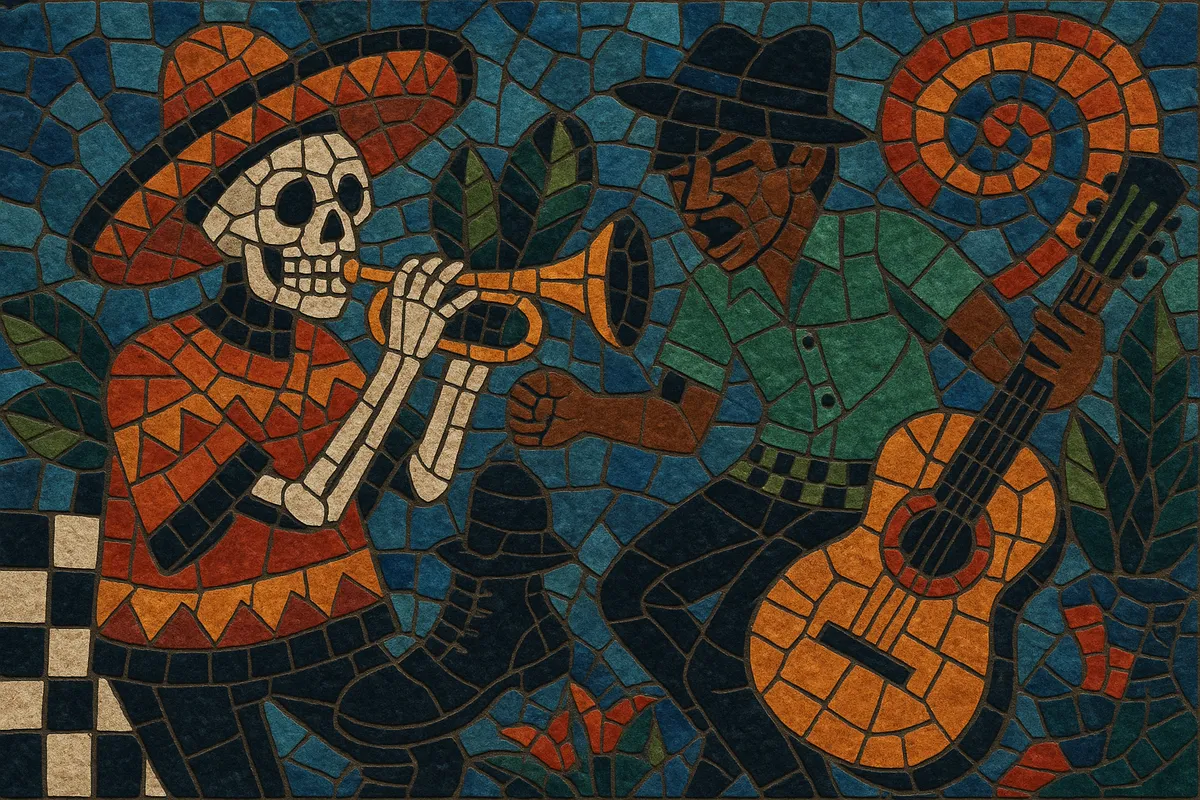Mexican ska is the Mexican expression of ska’s third wave, blending Jamaica’s off‑beat "skank" rhythm with Mexican rock en español, punk energy, and Latin dance grooves. It is horn‑driven, socially conscious, and built for dancing, often switching between brisk punk tempos and relaxed rocksteady/reggae feels.
The scene coalesced in Mexico City, Tijuana, and Monterrey, where DIY venues, student festivals, and barrio culture fostered large, communal shows. Bands frequently incorporate regional flavors—cumbia cadences, mariachi‑style horn voicings, or salsa percussion—while keeping ska’s hallmark upstroke guitar and call‑and‑response hooks. Lyrics are primarily in Spanish, using local slang and addressing everyday life, love, and social justice.
Mexican ska emerged as ska’s second and third waves spread through Latin America, the US, and Europe. In Mexico City and border towns like Tijuana, early adopters mixed Jamaican ska and rocksteady with punk and rock en español aesthetics. DIY shows, student movements, and neighborhood festivals provided the grassroots infrastructure.
By the mid‑1990s, the scene exploded with bands that brought big horn sections, pogo‑friendly grooves, and pointed lyrics. Groups such as Panteón Rococó, Inspector, La Tremenda Korte, Los de Abajo, and Tijuana No! helped establish a national circuit of clubs and festivals. Radio programs, college stations, and compilations further amplified the sound.
In the 2000s, Mexican ska diversified stylistically: some bands leaned toward skacore (fast, hardcore‑inflected ska), others emphasized traditional rocksteady/reggae, and many folded in cumbia, salsa, and local rhythms. The scene professionalized, with tighter horn arrangements, stronger production values, and international touring across Latin America and Europe.
A new generation (e.g., Maskatesta and newer traditional ska outfits) coexists with established bands, sustaining a vibrant live culture. Festivals and multi‑band bills remain central, while digital platforms broaden reach. Mexican ska today is a recognized pillar of Latin alternative music, retaining its dancefloor focus and socially conscious voice.


